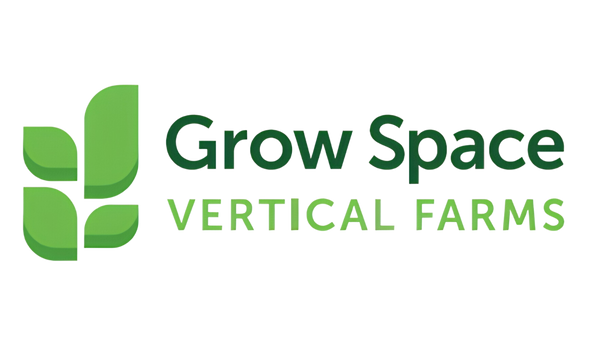
The Climate Impact of Grow Space - Video Sources
Share
For source analysis and the math we used to make these conclusions scroll past the video.
We have claimed to be more sustainable for some time, but we wanted to know is this actually true? In the past studies had suggested that indoor vertical farms were better for emissions even if they were on a non-clean grid. We talked to Brendan Conway with WE energies to learn more about where our energy comes from and the Energy for Tomorrow Program
Watch the Video here:
https://youtu.be/tKTnK_KA4lU
I did not include sources for statements made by Brendan as they are coming directly from WE energies.
We use to think that Vertical Farming was the future because of the potential sustainability aspects, but we continue to learn more.
Avgoustaki, D. & Xydis, G. “How energy innovation in indoor vertical farming can improve sustainability of urban agriculture.” Sustainability, 12(19): 7723, 2020. Available: https://www.ncbi.nlm.nih.gov/pmc/articles/PMC7516583/
Vertical Farming and Water Usage:
World Economic Forum. “Vertical farms can use up to 98% less water than traditional agriculture.” Available: https://www.weforum.org/stories/2023/06/how-vertical-farming-can-save-water-and-support-food-security/
Improving water use efficiency in vertical farming: Effects of growing … (Elsevier). “Vertical farms have demonstrated reductions in water use by 28–95% compared to greenhouses.” Available: https://www.sciencedirect.com/science/article/pii/S0378377423002305?
Studies that suggest that Indoor farming may release more CO2 emissions, and the contexts that can mean it releases more or less:
Blom, T., van Akker, J.-J., van Woerden, J., de Visser, C., & Janse, J. (2022). The embodied carbon emissions of lettuce production in vertical farms. Journal of Cleaner Production, 377, 134443. https://doi.org/10.1016/j.jclepro.2022.134443 Delft University Research
This just goes to show how oversimplified our math really is in the video only accounting for the energy usage and other small emitters. The biggest emitter is mainly the energy usage and can be as much as 16.7 times greater than conventional farms. We primarily only account for energy and CO2 supplementation, there is a lot more to consider with emissions. This is where the figure for the range of emissions comes from where we say how big the range is. This is looking more so at the upper end referring to the "baseline scenario" where emissions can be as much as 16.7 times higher.
Study: Vertical farming: productivity, environmental impact, and resource-use efficiency (2025). Springer. https://link.springer.com/article/10.1007/s13593-025-01055-w SpringerLink
This suggests that Vertical Farms are very dependent on the source of emissions for sustainability, and that Vertical Farms can be better and can be worse depending on context. At Grow Space's relatively clean grid we are on the better end without clean energy purchasing at around 5 kg. Around 85% of Vertical Farming emissions comes from the energy usage.
Comparative environmental footprints of lettuce supplied by open‑field and vertical farming systems (2022) — “Global warming burdens vary 0.48 to 17.8 kg CO₂e per kg of lettuce grown in hydroponic controlled environments.” ScienceDirect
Our estimation in the video is inherently an underestimate as we leave out figures that are not our direct emissions things like CO2 produced in seed production or in delivery etc. Each of these would be a small aspect or our emissions. Our 0.2 kg figure is only based on easily measured and calculated figures, and based on our core emissions only. The real number is most likely closer to the 0.48 figure when including those aspects which we chose to leave out for easier estimation and understanding.
This is a very common decision when companies are attempting to determine their CO2 emissions as many times there are major aspects that are our of their control. The objective of the studies is to determine the total impact where our objective is to determine our direct impact.
We most commonly say "we use more than 50% less emissions than conventional farms" which is more accurate as we should be near that level no matter what and with the We Energies Program we assume energy emissions is near zero in emissions.
Where do the numbers in the math come from?:
U.S. Energy Information Administration. “Average Retail Price of Electricity to Ultimate Customers by End-Use Sector, by State (Table 5.6.A).” Electric Power Monthly, 2023. https://www.eia.gov/electricity/monthly/epm_table_grapher.php?t=epmt_5_6_a
This is where the $0.13 comes from to estimate our energy usage.
EPA eGRID Summary Tables (2021) — “U.S. average electricity carbon intensity is ~0.52 kg CO₂e per kWh.” U.S. Environmental Protection Agency — https://www.epa.gov/egrid
This is where we got our .52 figure.
How did we determine our CO2 supplementation is around 2-3 tons of CO2?:
This is kind of "Napkin Math" (as is all of this) but this is the logic we use to determine this figure:
-
Room volume = 1,500 ft² × 9 ft = 13,500 ft³ = 382 m³
-
CO₂ boost = 1300 ppm – 420 ppm ≈ 880 ppm above ambient
-
At ~1 atm, 1 ppm CO₂ ≈ 0.001799 g/m³
-
CO₂ mass per “full air swap” = 0.001799 × 382 × 880 ≈ 0.605 kg
Annual use depends on how leaky the room is (air changes per hour, ACH).
Emissions (kg/yr) ≈ 0.605 × ACH × 24 × 365
-
ACH 0.4 → ~2,121 kg/yr = 2.12 t (metric) ≈ 2.34 short tons
-
ACH 0.5 → ~2,651 kg/yr = 2.65 t (metric) ≈ 2.92 short tons
-
ACH 0.6 → ~3,181 kg/yr = 3.18 t (metric) ≈ 3.51 short tons
At Grow Space we estimate we are at the lower end of this because it is somewhat difficult to determine the true figures for ACH with our current capabilities.
